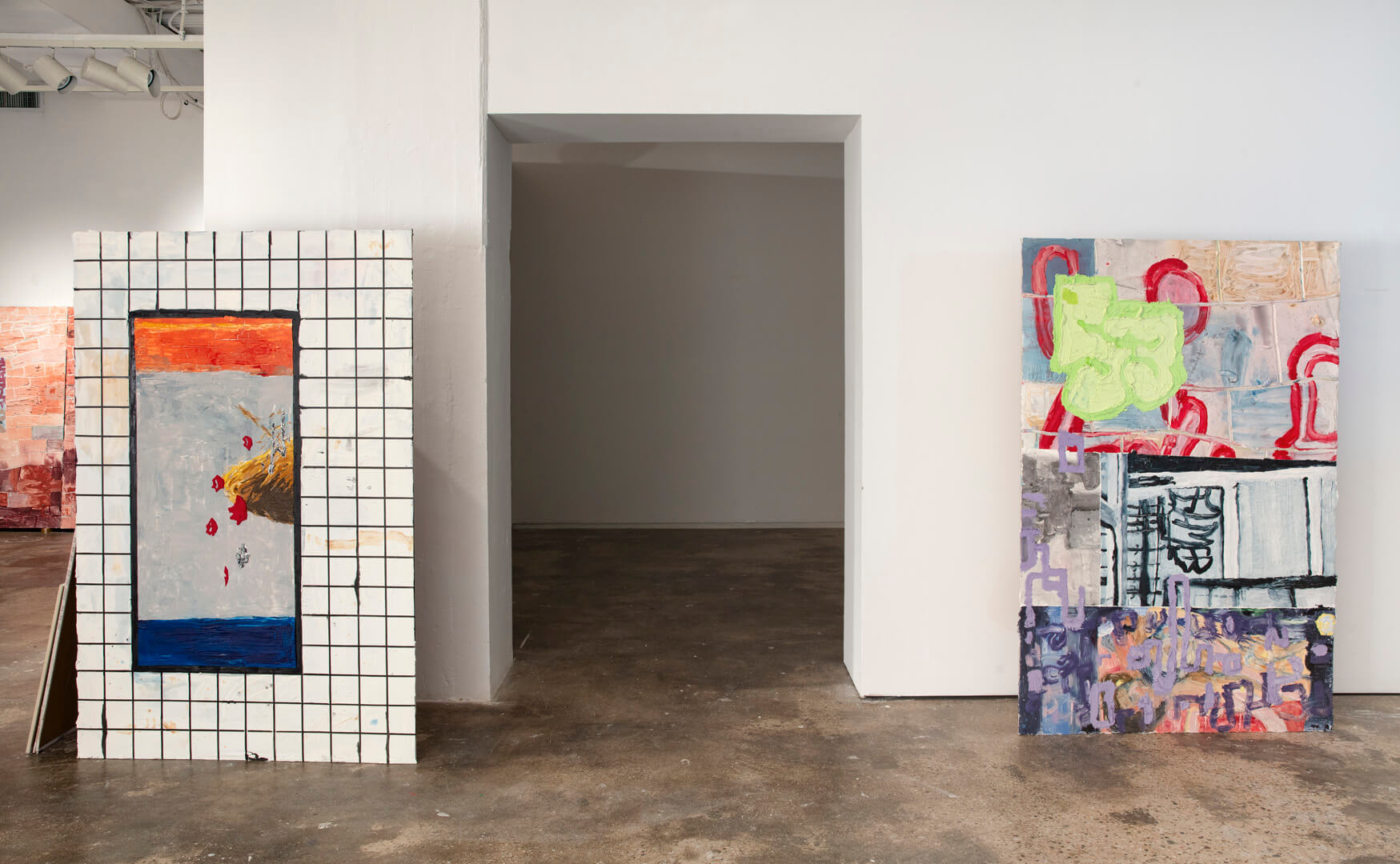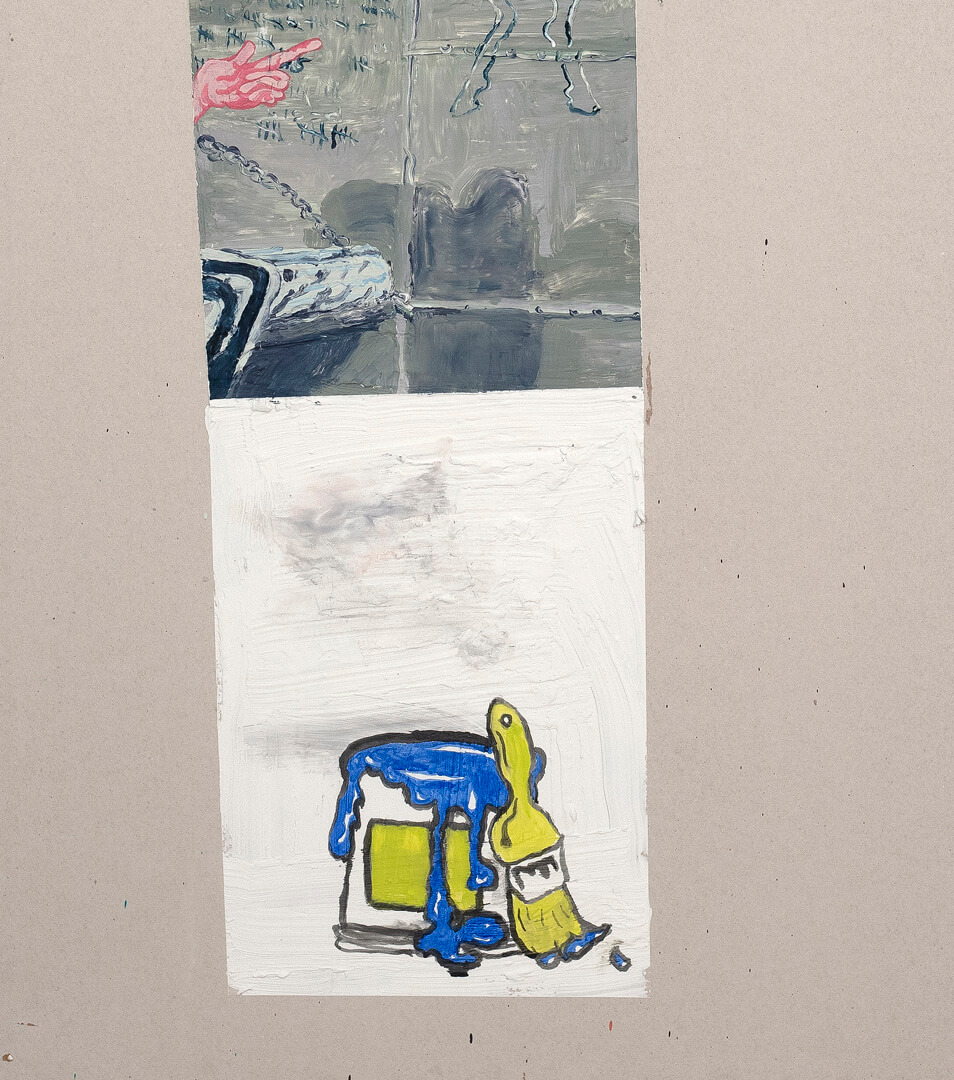
Tom Morrill
Tom Morrill

Tom Morrill
Tom Morrill (b. 1986, Florida) is an artist living and working in Brooklyn. He often paints walls. Walls are the living history of the world. They stand up and break things apart. They can live a long life, much longer than people—or shorter. On a wall, things can happen—events unfold—atrophies become messages and messages atrophy.
The Big Take Over
2020 Latex and joint compound on drywall 396.24 x 375.92 x 187.96 cm / 156 x 148 x 74 in

Every time I walk by one of the countless half-finished construction projects announcing new condos, I feel a warm, sad feeling. Strings of joint compound run down the seams of endless sheets of drywall and ring eternal. Mostly light grey but sometimes faded purple or mint green, each rectangle is one piece of the puzzle, infinitely reproducible yet constitutive and semi-structural—the architectural finishing touch. The drywall grid prefigures the nascent aesthetic purity of the white cube without ever knowing the white cube. Still alive in that ignorance is a generalized utility as yet undifferentiated.
Cucumber Water Skies
2020 Latex and joint compound on drywall 487.68 x 436.88 x 190.5 cm / 192 x 172 x 75 in
Pseudo-Chivalric Orders
2020 Latex and joint compound on drywall 121.92 x 182.88 x 12.7 cm / 48 x 72 x 5 in
Tom Morrill in conversation with Joachim Pissarro
Tom Morrill: These paintings are on drywall, and it’s like a kind of ad hoc fresco-like process. It’s basically a sheet of drywall, but I then use joint compound ladled on with a trowel and then I paint into it wet into wet. It sort of absorbs it and it creates this very matte surface. You can get a lot of body sculpture out of it really quickly.
Joachim Pissarro: And the brick delineating lines? Did you etch that in with a knife?
Tom Morrill: Yeah. That’s while it’s still wet. The painting happens and then I scrape. So it’s a reductive process. But what I do sometimes, which you can see in certain areas, I paint the panel underneath before I do the joint compound and then I skim off the compound once it’s on, so that’s where the greens and blues and stuff come from, the underneath.
Joachim Pissarro: It has a sort of Gustinian feel to it in a way.

Hunter MFA
The annual Spring 2020 Thesis Exhibition for graduates of the Hunter College MFA Studio Art program represents works by 19 artist graduates of this nationally noted program. Originally planned as a series of physical presentations at Hunter’s 205 Hudson Street campus in Tribeca, but canceled due to the COVID-19 pandemic, the MFA Thesis Exhibition’s digital iteration aims to provide a new, expanded platform for young artists entering the field.













